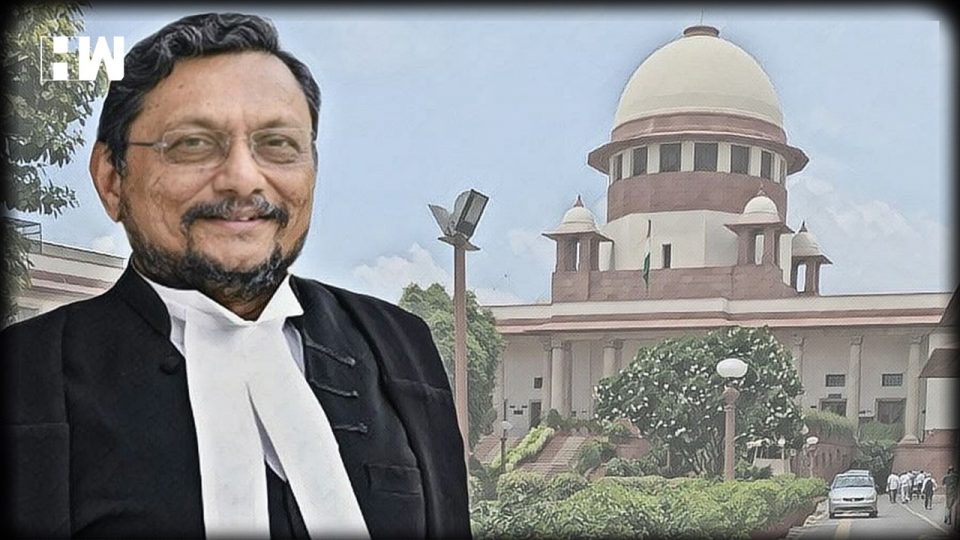A bench comprising Chief Justice Sharad Bobde, Justices AS Bopanna, and V Ramasubramanian passed an order which refused the release of nearly 150 Rohingyas detained in Jammu and allowed their deportation to their parent country as per the procedures of law.
In a brief 6 page order, the Supreme Court last week, allowed the deportation of at least 150 Rohingyas refugees in Jammu to be deported as per the “procedure prescribed for such deportation.” The order came after a writ petition was filed in the Supreme Court (Mohamad Salimullah and Others Vs Union of India) asking for relief which challenged the detention of Rohingya refugees in Jammu and the move to deport them back to their parent country Myanmar. What does the Court order say? Who are the Rohingyas? Let’s find out.
Who Are Rohingyas?
The Rohingyas are an ethnic group, largely comprising Muslims who predominantly live in Western Myanmar. According to the 1982 Burmese citizenship law, a Rohingya (or any ethnic minority) is eligible for citizenship only if “he/she provides proof that his/her ancestors have lived in the country prior to 1823. Else, they are classified as “resident foreigners” or as “associate citizens” (even if one of the parent is a Myanmar citizen).
Following this law, they were rendered stateless and have since been subject to persecution. Inhumane treatment, including mass murder and rape, and ethnic cleansing at the hands of the Mynamar Army triggered a mass exodus to neighboring countries, including Bangladesh (87000 on last count) and India (40000 on last count).
India’s Stand On Rohingyas
Former Minister of State for Home Affairs Kiren Rijiju, overtly enough in Parliament, said “infiltration from the Rakhine State of Myanmar into Indian territory (read Rohingyas)…besides being a burden on the limited resources of the country also aggravates the security challenges posed to the country.” and termed them as ‘illegal immigrants’. This statement sprung a surprise, given India’s traditional stand on refugees. India has 3,00,000 people categorized as refugees.
It’s important to note that India doesn’t have a refugee policy or law of its own.

1951 Refugee Convention
The 1951 Convention defines a refugee as a person who is outside his or her country of nationality or habitual residence; has a well-founded fear of being persecuted because of his or her race, religion, nationality, membership of a particular social group or political opinion; and is unable or unwilling to avail him— or herself of the protection of that country, or to return there, for fear of persecution (see Article 1A(2)). People who fulfill this definition are entitled to the rights and bound by the duties contained in the 1951 Convention.
India isn’t a signatory to the 1951 United Nations Refugee Convention nor its 1967 Protocol, which has 140 signatories, an overwhelming majority of the world’s 190-odd nations.
Principle Of Non-Refoulement
Simply put, this principle bars states expelling or returning refugees, asylum-seekers, or other persons within their effective jurisdiction to any country where there exist substantial grounds for believing that they would be subjected to torture or arbitrary deprivation of life. Initially, this principle was applied in the specific context of the Refugee Convention but subsequently included in the clauses of various other treaties like the International Covenant on Civil and Political Rights, Convention on the Rights of Child that talk about this principle. India is a party to these treaties.
The principle is even more explicitly stated in Convention against Torture and Other Cruel Inhuman or Degrading Treatment or Punishment (CAT), and the International Convention for the Protection of All Persons from Enforced Disappearance (CPPED) which India has signed but not ratified.
Also Read : Adani Paying Millions To Myanmar Military-Backed Group: Report
The Arguments
Adv. Prashant Bhushan, appearing for the petitioner argued that due to the ongoing crisis in Myanmar Army, deporting them at such a time would endanger their lives given the fact that the Rohingyas have already been at the receiving end of the Army’s oppressive treatment and placed reliance on the principle of non-refoulement. He also referred to the order passed by the International Court of Justice (ICJ) last year which acknowledged the genocidal threat.
Solicitor General Tushar Mehta, appearing for the Union Government, opposed the plea and cited a similar plea that had been filed in Assam in 2018 which was eventually dismissed but not mentioned by the petitioner. He also termed Rohingya refugees and said that
“India cannot be a capital for all illegal migrants of the world.”
Solicitor general tushar mehta
Senior Advocate Harish Salve, intervening on behalf of the J&K administration, argued that the principle of non-refoulement was not binding on the Government of India since it wasn’t a signatory to the aforementioned treaties which talked about the non-refoulement principle.
What Did SC Say?
A bench comprising Chief Justice Sharad Bobde, Justices AS Bopanna, and V Ramasubramanian passed an order which refused the release of nearly 150 Rohingyas detained in the holding centres in Jammu and allowed their deportation to their parent country as per the procedures of law. During the hearing, the CJI made oral observations acknowledging the threat faced by Rohingyas in Myanmar but added that the Court cannot do anything about it.
“Possibly that is the fear that if they (ROHINGYAS) go back to Myanmar they will be slaughtered. But we cannot control all that.”
chief justice sa bobde
“We are not called upon to condemn or condone genocide. We are certain that there should be no genocide on earth”, the CJI added during the hearing.
As an independent media platform, we do not take advertisements from governments and corporate houses. It is you, our readers, who have supported us on our journey to do honest and unbiased journalism. Please contribute, so that we can continue to do the same in future.

